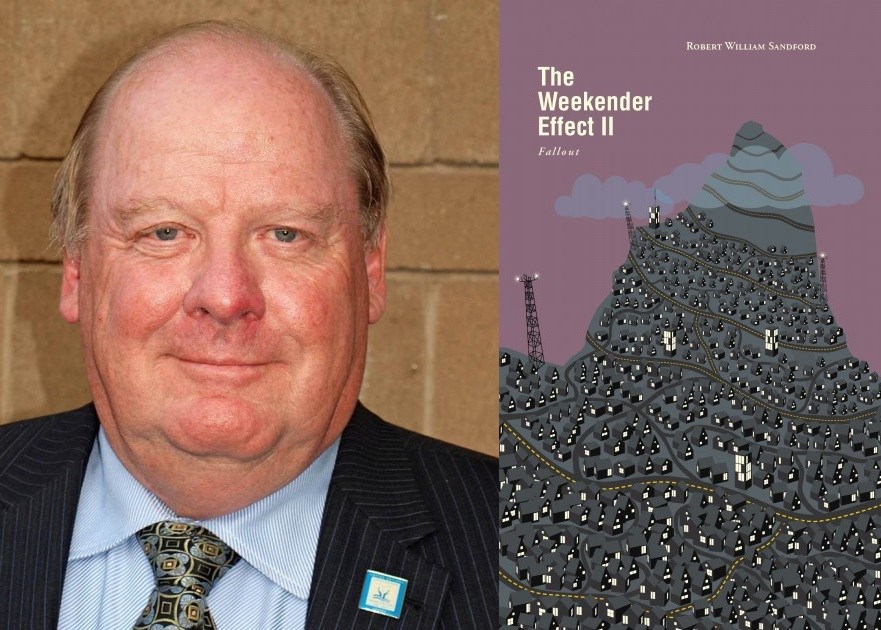Scott Hayes | [email protected]
Local Journalism Initiative Reporter
When it comes to the multifarious impacts of hyper-development in mountain towns, Robert William Sandford wrote the book. And then he updated it, and published a sequel while he was at it.
He has just released an update to “,” first published in 2008. It sits on the bookshelves next to his new book, “.”
The Canmore resident said that the impetus for writing the first volume in Rocky Mountain Books’ Manifesto Series was his astute observations of how visitation changes the very places it is compelled toward.
“I felt that we were being overwhelmed here in Canmore,” said the author, who also serves as the EPCOR Chair with the United Nations University Institute for Water, Environment and Health.
“What happened is that the nature and character that made the town so attractive to live in and to visit was being lost. Many of the people who established the character and the desirability of visiting here were being forced out by extraordinarily high costs and also changes.”
Exponential outsider interest leads to hyper-development, turning otherwise small towns into mini-cities where the cost of living becomes increasingly greater, eventually to unmanageable levels for anyone to afford. The town’s residents are forced out by attrition while the environmental toll rises often beyond anyone’s ability to repair it.
“The thrust of the book was that outside interests were quietly but aggressively appropriating and marketing the best qualities of mountain towns to other outsiders seeking weekend retreats,” he said.
At a certain point, the qualities of nature that were the very drivers of these outside interests would no longer exist, altered or destroyed by all the attention.
In the last 15 years since his first book was released, Sandford wanted to revisit how things have grown and morphed in numerous mountain communities in North America. He also wanted to add some vital elements to the text. In his words, he got some things wrong.
He said that he didn’t fully realize the positive contributions of many retirees and weekenders to their communities. He also missed the emergence of entire neighbourhoods of newcomers who had come to reaffirm community values on their own unique terms.
Something else has happened since 2008: COVID-19. “The Weekender Effect II: Fallout” takes a look at the current and future challenges facing mountain communities.
Sandford starts with how the pandemic enabled many people to work remotely, which turned into just another facet of the pressures being put on mountain towns dealing with untenable development pressures and property value hikes.
His books offer a well-versed overview of how windfall increases in property values have begotten a populace that effectively tortures itself to work as much as possible in order to afford to live in these places of beauty.
“My question is: are we going to keep stealing ravenously from the future? I think it appears to me that it doesn't matter if you're a weekender or a full-timer. It's not in our interest to let that happen,” he said.
“I still think we can create the west all of us want: a better, fairer and more meaningfully sustainable west. To do so, we have to wake up and realize all we are lucky to have and all we could lose if we stay on this path. Making up that realization is what this book is about.”




